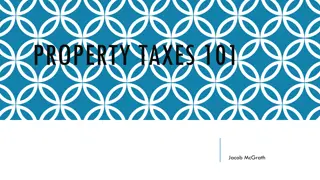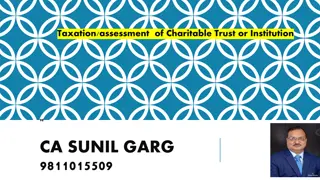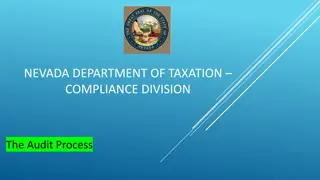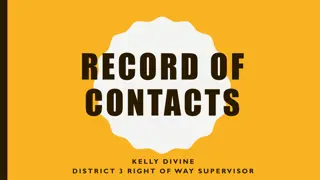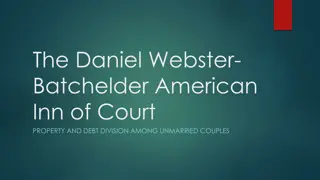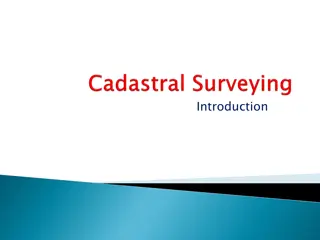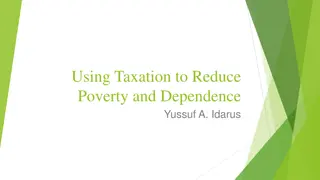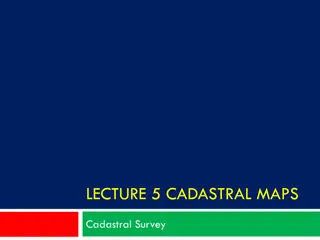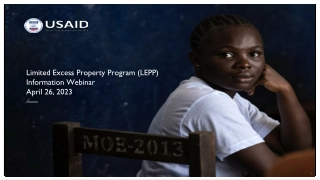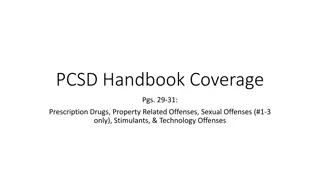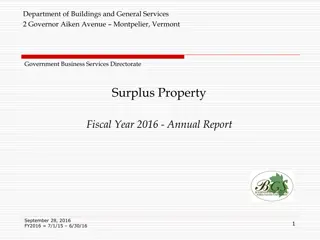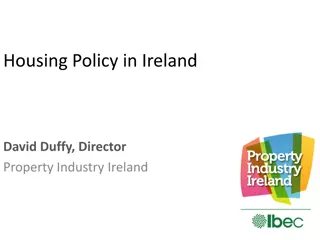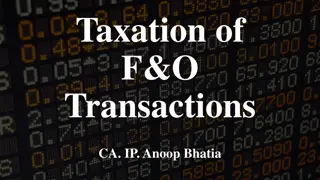Understanding the TRIM Process for Property Taxation
The TRIM process outlines the requirements for taxing authorities when levying millage rates, emphasizing transparency and disclosure to taxpayers. Key timelines and procedures ensure proper budget planning and public awareness of tax rates. Failure to comply may result in restrictions on millage rates.
Download Presentation

Please find below an Image/Link to download the presentation.
The content on the website is provided AS IS for your information and personal use only. It may not be sold, licensed, or shared on other websites without obtaining consent from the author. Download presentation by click this link. If you encounter any issues during the download, it is possible that the publisher has removed the file from their server.
E N D
Presentation Transcript
Property Tax Property Tax Presentation Presentation Tuesday, June 30th 2015 Christopher M. Quinn, MACC, CPA, CFE, CGFO, CGMA Finance Director Lina Williams Budget & Financial Analyst
January First Quarter Review February Financial Audit March Presentation of Annual Progress Report and Citizen Survey Results Revise 10 Year Infrastructure Plan April Presentation of the Year to Date Budget Second Quarter Review FY 2016 Budget Input Begins for Departments May Annual Update of the Strategic Action Plan Fund Accounting Presentation Revenue Source Presentation June Long Term Financial Planning Presentation Property Tax Presentation
July General Fund Budget Workshop Adopt Maximum Millage Rate Proprietary Funds Budget Workshop Third Quarter Review August Special Revenue & Capital Fund Budget Workshop Final Proposed Budget Presentation September Public Hearing to Tentatively Adopt Millage Rate & Budget Public Hearing to Adopt Final Millage Rate & Budget October November FY 2015 Year End Close-out November December End of Year Review Citizen s Survey
Truth in Millage (TRIM) Process Timeline Compliance Property Taxes Just (Market) Value Assessed Value Exempt Value Taxable Value Rolled-Back Rate Millage Rate
The TRIM process establishes the statutory requirements that all taxing authorities levying a millage must follow, including all notices and budget hearing requirements. The purpose of the Truth in Millage law is to require full disclosure by taxing authorities to the taxpayers and general public of the rates and amount of taxes, prior to levying the taxes. TRIM Timeline: By June 1, Property appraiser provides total assessed value of non- exempt property to be used for budget planning purposes By July 1, Property appraiser certifies the taxable value to each taxing authority July 1 (or the date of certification of taxable value whichever is LATER) is the first day of the TRIM process
Within 35 days of certification of value, each taxing authority must inform the Property Appraiser of: Prior year millage rate Current year proposed (maximum) millage rate Current year rolled-back rate The date, time and meeting place of the Tentative Budget Hearing If a taxing authority fails to provide the information to the property appraiser within 35 days The taxing authority will be prohibited from levying a millage rate greater than the rolled-back rate The rolled-back rate will be computed by the Property Appraiser and used to prepare the Notice of Proposed Property Taxes
The property appraiser must mail the Notice of Proposed Property Taxes (TRIM Notice) within 55 days of certification
Taxing authorities are required to hold two public hearings to adopt a millage rate and budget The tentative TRIM hearing is advertised on the TRIM Notice The final hearing must be advertised within 15 days of adopting the tentative millage and budget. The advertisement must include: Notice of Proposed Tax Increase or Notice of Budget Hearing Budget Summary Ad A public hearing on the final millage rate and budget should be held 97 to 100 days after certification of value and 2 to 5 days after the hearing is advertised
TRIM hearings may be held: Monday Friday after 5:00 PM Anytime on Saturday Never on Sunday School board has first priority of a hearing date BOCC has second choice No other taxing authority, in the county, can hold a hearing on the same date as the school board or BOCC The general public will be allowed to speak and ask questions prior to the adoption of any measures by City Council City Council must adopt its tentative or final millage rate prior to adopting its tentative or final budget
The tentative millage rate cannot exceed the proposed millage rate, unless, each taxpayer is mailed a revised TRIM Notice at the expense of the Taxing Authority The final millage rate cannot exceed the tentatively adopted millage rate The TRIM process has to be completed within 101 days Within 3 Days of Final Hearing: Resolution or ordinance adopting the final millage rate must be forwarded to the Property Appraiser, Tax Collector and the Department of Revenue Within 30 Days of Final Hearing: Each taxing authority must forward necessary documents in order to certify compliance to the Florida Department of Revenue
Property Appraiser Assessed Value of the Home The Assessed value is the value for tax purposes determined by the property appraiser for a given piece of real or personal property. The Save our Homes Limitation provides that an annual increase in assessment cannot exceed three percent of the prior year s assessed value or the percentage change in the Consumer Price Index (CPI)
Market Value increases 50% per year Taxable Value on Homestead can only increase lessor of 3% per year or CPI
Taxable Value of the Home: An exemption is the amount that state law determines should be deducted from the assessed value of property for tax purposes. Some examples of exemptions include homestead, senior, widow/widower, military and tangible. Assessed Value Exemptions = Taxable Value The taxable value is the balance of the assessed value minus exemptions.
Property Tax The millage rate is a rate established per $1,000 of assessed taxable value. Each taxing authority sets their millage rate. A property tax millage rate of 3.5 mills, for example, would mean property with a taxable value of $100,000 would pay $350 in property taxes. Taxable Value x Millage Rate = Property Tax The Rolled-back rate is the millage rate that is required to provide the same revenue, from ad valorem taxes, as was levied during the prior year.
Survey of Florida cities : Population between 70K-100K 10 Cities with Millage Property Tax Collections Public Service Taxes Ranking City Population Millage Rate Taxable Value 86,647 3.42160 18,222,776,998 62,351,054 Yes 1 Boca Raton 78,046 4.2450 3,892,358,641 16,523,062 No 2 Palm Coast 95,505 5.0829 7,301,010,574 37,110,307 Yes 3 Davie 86,360 7.9900 1,662,237,776 13,281,280 Yes 10 Deltona
Ad Valorem Receipts Capital Millage 0.35 Property Value Operating Millage Total Millage Fiscal Year 2003 1,983,740,628 3.05 3.4 6,539,567 2004 2005 2006 2007 2008 2009 2010 2011 2012 2013 2014 2015 2,404,239,111 3,107,581,090 4,444,854,928 6,239,994,489 7,009,877,421 6,131,965,169 5,246,998,187 4,463,085,550 3,891,594,126 3,646,122,021 3,690,312,857 3,895,717,814 3.05 2.9 2.4 2.5 2.2123 2.6123 3.15 3.5 3.54 4.1502 4.1932 4.1609 0.35 0.5 1 0.75 0.75 0.35 0.35 - 0.45 0.1456 0.0773 0.0841 3.4 3.4 3.4 3.25 2.96234 2.9623 3.5 3.5 3.99 4.2958 4.2705 4.245 7,855,523 10,207,899 14,632,296 19,603,806 20,184,340 17,602,781 17,828,406 15,048,300 15,000,700 15,120,750 15,203,633 15,963,477 Change 2008-2015 Percentage Change (3,114,159,607) -44% 1.9486 - -0.6659 - 1.2827 - (4,220,863) -21% FY 2016 Preliminary Estimate of Taxable Value is $4,110,000,000
COPC Portion of Total Millage Rate COPC Portion of Total Taxes
Adopted Millage Rate vs. Rolled-Back Rate Fiscal Year 2008 - 2015
90% 83.77% 83.00% 82.00% 81.85% 80% 70% FY 12 FY 13 FY 14 FY 15
$16 Million Ad Valorem Taxes =
TAX REVENUE: Ad Valorem, Sales, Gas, Communications, Local Business Tax, Solid Waste Franchise Fee, State Revenue Sharing, State & Federal Grants, etc. Including grants, the City receives $48/month or $576/year per city resident. Not including grants the City receives $31/month or $374/year per city resident.
$48/Month or $576/Year pays for: Emergency Services Additional Law Enforcement Code Enforcement Housing Programs Streets (including Maintenance and Resurfacing) Parks, Paths and Trails (including maintenance and construction) Indirect Costs and Others
July 14th- Budget Workshop - General Fund 21st - Budget Workshop - Adopt Maximum Millage Rate 28th- Budget Workshop - Proprietary Funds August 11th - Budget Workshop Special Revenue Funds & Capital Funds 25th- Final Proposed Budget Presentation September Public Hearing to tentatively adopt millage rate and budget Final Public Hearing to adopt final millage and budget


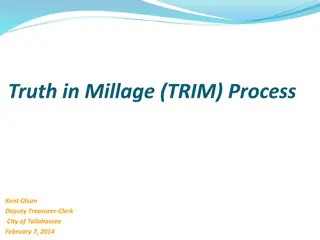
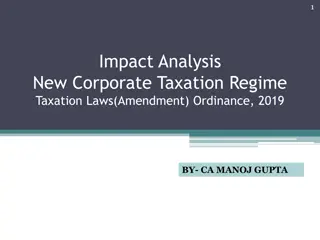

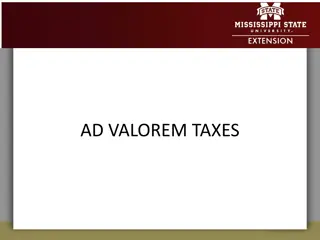
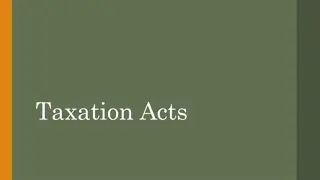
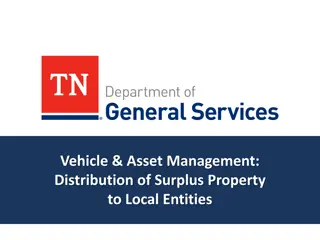

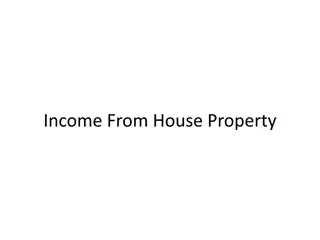
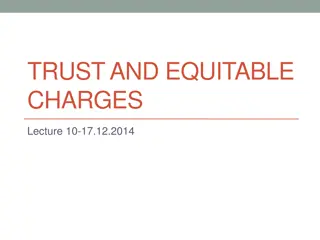

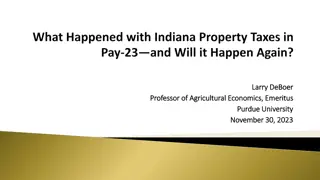
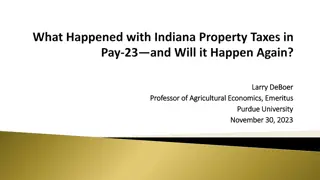

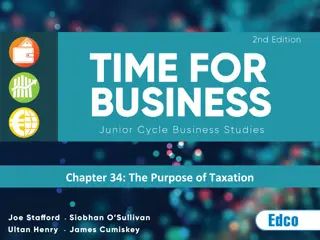
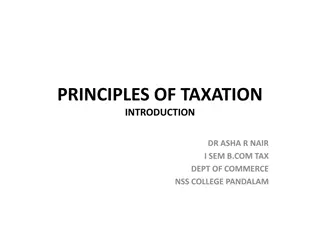
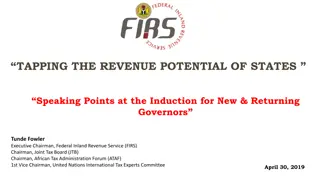
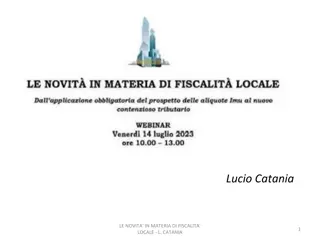
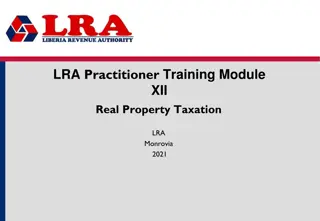
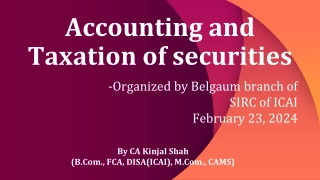
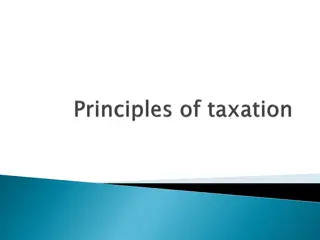
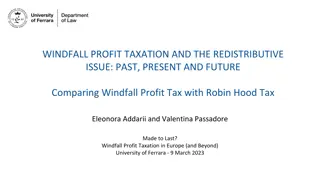
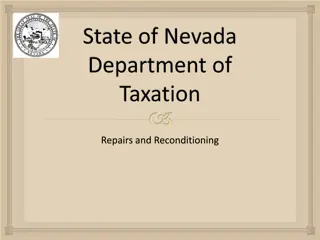
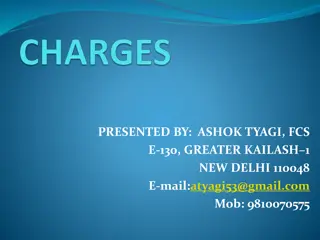

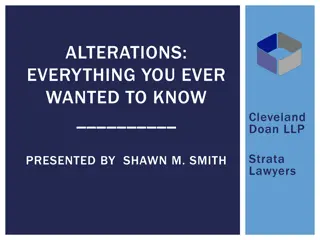
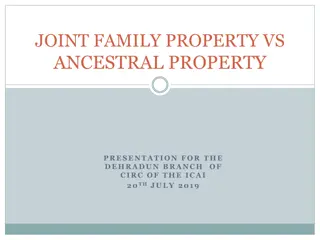

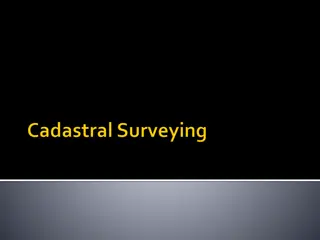
![Property Settlements in Family Law: Case Study of Stamatou & Stamatou [2022] FedCFamC1F 241](/thumb/63303/property-settlements-in-family-law-case-study-of-stamatou-stamatou-2022-fedcfamc1f-241.jpg)
